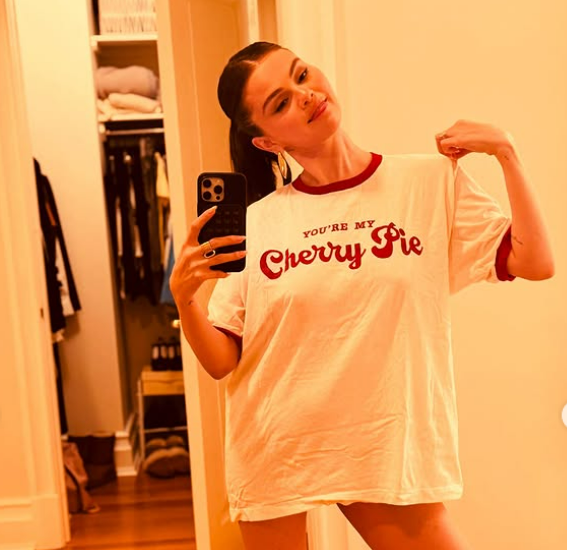KEY POINTS
- Demi Lovato Reveals Trauma Behind Disney-Era Abstinence Pledge
- From Selena Gomez to Miley Cyrus: How Disney Stars Reframed Their Vows
The late 2000s witnessed an extraordinary cultural phenomenon: a generation of Disney Channel stars sporting matching silver bands and making public pledges that would follow them into adulthood. These weren't engagement rings or fashion statements—they were purity rings, symbols of a promise to abstain from sex until marriage.
What began as personal faith decisions soon transformed into carefully managed public personas, with some stars later revealing the profound psychological toll of maintaining such promises whilst navigating fame, relationships, and their own evolving identities.
From Demi Lovato's devastating revelations about hidden trauma to the Jonas Brothers' reflections on creative constraints, these stories illuminate not only youthful idealism but also the intense pressures of growing up under the scrutiny of the entertainment industry.

Demi Lovato: Behind the Promise
As a teen, Demi Lovato wore a purity ring and, like many of their Disney peers, framed abstinence as a moral choice. However, in the 2021 documentary 'Dancing With the Devil,' Lovato revealed the stark reality behind that public commitment.
'I lost my virginity in a rape... being part of that Disney crowd that publicly said they were waiting 'till marriage' prevented me from speaking out,' they said.
'I didn't have the romantic first time with anybody, that was not it for me, and that sucked. And then I had to see this person all the time, and so I stopped eating and coped in other ways: cutting, throwing up, whatever. And my bulimia got so bad that I started throwing up blood for the first time.'
Lovato also linked their silence to the backlash faced by other female celebrities, saying, 'Women are typically more oppressed than men, especially at 15 years old and especially as a little child-star role model. My # MeToo story is about telling someone that someone did something to me, and they never got in trouble for it. They never got taken out of the movie they were in.'
The singer explained they never went public in part because of how Rihanna was blamed after being assaulted by Chris Brown in 2009.
The Jonas Brothers: Church, Commitment, and Creative Constraints
The Jonas Brothers — Joe, Nick and Kevin — famously wore purity rings as a symbol of their vow to abstain until marriage, a practice rooted in their church upbringing.
'I must have been 10 or 11... we have these rings... promises to ourselves and God that we'll stay pure till marriage,' Joe told The Late Late Show host James Corden in a 2019 'Carpool Karaoke' segment. 'We grew up in a church and our dad was a pastor, so it kind of just came naturally... I'm gonna wait for the right person.'
But, as Joe admitted to Vulture, the rings came with a cost. 'Because of our age, because of Disney, because of those rings, there were so many things throughout our career that we had to sugarcoat... It felt like we couldn't be creative, so we stopped listening to them and just started handing s--- in.'
Eventually, both Joe and Nick removed their rings. Kevin, however, kept his vow, marrying Danielle Deleasa in 2009 and telling People magazine they waited until after their wedding to have sex.
Miley Cyrus: The Untouchable Image
Miley Cyrus also wore a purity ring during her Hannah Montana years, once telling People in 2008: 'I like to think of myself as the girl that no one can get... and I think if [staying a virgin] is a commitment girls make, that's great.'
While she later moved away from that image, she kept the conversation alive in 2019 by cheekily asking the Jonas Brothers about removing their rings — a lighthearted nod to an era that had long passed.
Selena Gomez: Personal Choice and Public Scrutiny
Selena Gomez began wearing a purity ring at 13. 'I said, "Dad, I want a promise ring." He went to the church and got it blessed... I'm going to keep my promise to myself, to my family, and God,' she recalled.
By 2015, the ring was gone. 'I respect so much what it represented, but it isn't for everyone,' she told The Sunday Times. 'I'm not embarrassed to say that... the ring has come off.'
Gomez later revealed she removed the ring during her relationship with Justin Bieber. 'I didn't think I was doing anything bad by falling in love... there's such an emphasis on people being the perfect thing and then destroying them because it's good press. Also, throw in the fact that you are a teenager — it makes it more difficult.'
She criticised the intense scrutiny over her choice, saying the media should not be policing whether a star wears a purity ring or takes it off.
The Symbol Of An Era
For many Disney stars, purity rings initially began as personal or religious statements but evolved into powerful marketing symbols—ones that would follow them into adulthood, sometimes with destructive consequences. The phenomenon capitalised on the early 2000s cultural moment and Disney became the conduit for this movement, creating a family-friendly alternative to mainstream pop music that both church and state could support.
Chastity transformed from a personal promise into a commercial brand, with young stars finding their names 'inextricably linked to the repression of their own sexuality'.
As their careers evolved, so did their perspectives on relationships, sexuality, and public image. The purity ring era represents both the innocence and intense pressure of that unique moment in pop culture history, when teenage ideals collided with the demands of the entertainment industry, leaving lasting impacts on the young people at its centre.
The stories of these former Disney stars reveal the complex realities behind carefully constructed public personas, showing how personal struggles often remain hidden beneath the surface of celebrity culture. Their eventual honesty about these experiences has helped illuminate broader conversations about consent, agency, and the right to evolve beyond childhood promises made in the public eye.







